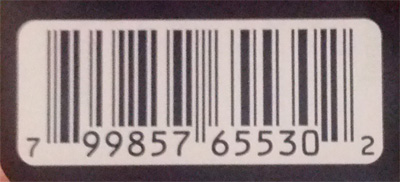The Need for an Open Barcode Database
Next time you're in the store, grab a random product and look turn it around. You'll probably see one of these:

Encoded in that bar code is the product's Global Trade Item Number (GTIN). It's 8-14 digits long and almost every product sold in the world has one of these numbers. They are managed by the GS1, a non-profit organization that manages standards for supply chains. GS1 provides (and controls) the Global Electronic Party Information Registry (GEPIR), the authoritative source for GTINs. The two interfaces to GEPIR are a web portal and a SOAP web service, both of which restrict a user to 20-30 daily requests. There is no option to download the dataset, submit missing item numbers, or correct inaccuracies.
Compare this to OpenStreetMaps, where I can download an entire map of the earth with a single click or add a missing building using their web-based editor.
I'm not the first person to realize how bad the situation is. There are other options out there, but none are the open database that's needed. Most options are just as closed as GEPIR.
The last service on the list, POD, is of interest. It has almost a million indexed items and has a free dump of the data. The data is licensed under the Open Data Commons Open Database License, which is the same license as Open Street Maps. The only issue is that POD doesn't support the crowd-sourcing of its data.
I think OpenStreetMaps solved this problem the right way: get people contributing data and make that data available under an open license.
My idea is an application that let's you scan bar codes and upload GTINs. If the product isn't in the database, just attach a photo and add a short description. The database will be small at first, but once a few hundred people start tagging, it will be the next CueCat.